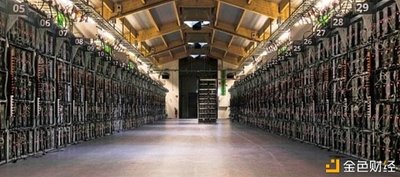The relentless hum of ASIC miners, a symphony of computational power, echoes across the digital landscape. This isn’t just noise; it’s the sound of cryptocurrency being born, the proof-of-work consensus mechanism diligently forging new blocks and securing blockchains. But this digital genesis comes at a cost: energy consumption. In the ever-evolving world of cryptocurrency mining, particularly when entrusting your operation to a hosting service, optimizing power consumption isn’t just about saving a few dollars; it’s about survival and sustained profitability.

The price of Bitcoin, Ethereum, Dogecoin, and the myriad other cryptocurrencies can be notoriously volatile. One day, mining might be incredibly lucrative; the next, the returns could be razor-thin. High electricity bills can quickly turn a profitable venture into a financial sinkhole. A mining hosting provider that prioritizes energy efficiency offers a buffer against these market fluctuations, allowing miners to remain competitive even when the price of their chosen cryptocurrency dips. They accomplish this through several avenues, from leveraging renewable energy sources to implementing advanced cooling solutions and optimizing miner placement within their facilities.
Imagine a world where vast server farms are powered by solar panels glinting under the desert sun, or geothermal plants harnessing the earth’s internal heat. This isn’t some futuristic fantasy; it’s a rapidly growing reality. Mining hosting providers are increasingly turning to renewable energy sources to reduce their carbon footprint and, crucially, lower their operating costs. This translates directly into lower hosting fees for miners, enhancing their profitability and appealing to environmentally conscious investors.
Beyond renewable energy, innovative cooling technologies play a pivotal role in optimizing power consumption. Overheating miners are inefficient miners. They consume more power to maintain operational stability and are prone to hardware failures, leading to costly downtime. Advanced cooling systems, such as immersion cooling (submerging miners in a dielectric fluid) or advanced air-cooling techniques, dissipate heat more effectively, allowing miners to operate at peak performance without excessive energy expenditure. The savvy hosting provider invests in these technologies to provide a stable and efficient environment for their clients’ mining rigs.
Furthermore, efficient mining hosting involves careful management of the entire ecosystem. This includes selecting the right hardware, optimizing mining pool configurations, and even strategically placing miners within the facility to maximize airflow and minimize heat pockets. A well-managed mining farm acts as a finely tuned machine, where every component works in harmony to extract the maximum amount of cryptocurrency with the least amount of energy. Consider also the geographical location. A hosting provider situated in a region with naturally cooler temperatures or lower electricity rates has a distinct advantage, offering significant cost savings to their clients.
The choice of mining hardware also impacts energy efficiency. While older ASICs might be cheaper to acquire initially, their power consumption is significantly higher compared to newer, more efficient models. A forward-thinking hosting provider will advise clients on the optimal hardware choices based on their budget and mining goals, factoring in long-term energy costs and potential profitability. This holistic approach ensures that miners are equipped to succeed in the long run, regardless of market conditions.
The ripple effects of energy-efficient mining hosting extend beyond individual miners. By reducing the overall energy consumption of the cryptocurrency network, we contribute to a more sustainable and environmentally responsible future for blockchain technology. This is increasingly important as institutional investors and governments scrutinize the environmental impact of cryptocurrencies. Proof-of-Stake (PoS) consensus mechanisms like those employed by newer versions of Ethereum are gaining traction precisely because of their drastically reduced energy footprint compared to Proof-of-Work (PoW) systems like Bitcoin.
Ultimately, navigating energy efficiency in mining hosting is about making informed decisions. Miners need to carefully evaluate hosting providers, considering their energy sources, cooling technologies, management practices, and hardware recommendations. The cheapest option isn’t always the best; long-term profitability hinges on minimizing energy consumption and maximizing efficiency. By prioritizing energy efficiency, miners can secure their financial future and contribute to a more sustainable future for the cryptocurrency ecosystem.

The future of cryptocurrency mining lies in innovation and optimization. As technology advances and energy costs fluctuate, the ability to adapt and embrace energy-efficient solutions will be the key to long-term success. Miners and hosting providers who prioritize sustainability will not only thrive but also shape the future of the decentralized digital economy.